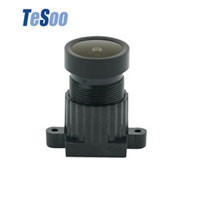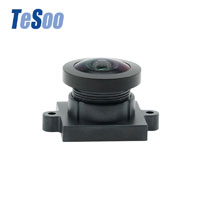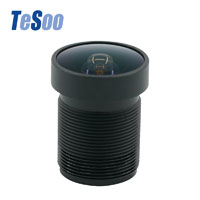Intelligent Cabin Utilizes Car Camera Lenses
DMS (Driver Monitoring System): Camera lenses from commercial vehicles to passenger vehicles, growth trend is evident
DMS is currently the fastest growing application area for automotive camera lenses in the cockpit in recent years. With the promotion of policies such as "two passengers and one danger", DMS is gradually becoming a standard configuration for commercial vehicles, and will also penetrate into passenger vehicles. Regardless of ride-hailing cars, DMS functions will play an important role in safe driving before L4 and above autonomous driving technologies truly arrive.
Based on computer vision technology, DMS automotive camera lenses capture driver facial parameters and compare them with preset databases to determine whether the driver is distracted or fatigued, triggering a warning system to refocus the driver's attention.
The installation position of DMS automotive camera lens is generally on the top of the driver or on the A-pillar. In addition, some manufacturers have innovatively hidden the camera lens between the steering wheel and the dashboard, which is both beautiful and saves space to a certain extent.
In addition, DMS automotive camera lenses not only serve as sensors for monitoring the driver's status, but also can be combined with AR HUD products, transparent A-pillars, and other applications that require calculation of the driver's line of sight.
OMS (Occupant Monitoring System): Camera lenses have a role to play in protecting personal and property safety
OMS (Occupant Monitoring System) is a derivative application of DMS that extends the function to the overall interior space of the car.
Similarly, based on visual technology, OMS detects the front passenger, rear passenger, and residual items, including seat belt detection, passenger posture detection, and passenger number detection. It plays a role in personal and property safety, especially in detecting and reminding owners of residual items and children after getting out of the car.
Whether it is DMS or OMS, its current application is mainly in the warning stage, and both have greater expansion and imagination space, and can be combined with AD/ADAS systems to achieve personalized vehicle control functions.
For example, by combining algorithms and machine learning, identification and more rich human-vehicle interaction can be achieved through face recognition and emotion recognition. When the driver's identity is recognized, the corresponding individual preset or habits will be adjusted, such as adjusting the car seat, personalizing recommended playlist/broadcast, and providing frequently used navigation destinations.
Camera lenses-based gesture recognition and control in cars: A nascent form of human-vehicle interaction that is not yet widely adopted
In the past, gesture recognition and control were seen as "black technology" and caused a stir due to BMW's application.
The 3D camera lens on the center console is the perception hardware basis for car gesture recognition and control, analyzing gestures based on the time difference between emitted light and receiving end (hand) and comparing them with preset gestures in the system to achieve corresponding operations.
Gesture control is a nascent form of human-machine interaction that can replace some touch or press operations.
Currently, car-based gesture recognition and interaction is still in its early stages and is mainly used in media streaming control, as it cannot replace physical buttons, touchscreens, and other controls for safety devices and center screens.
Popular Camera Lens
Hot Camera Lens Articles

 English
English 

